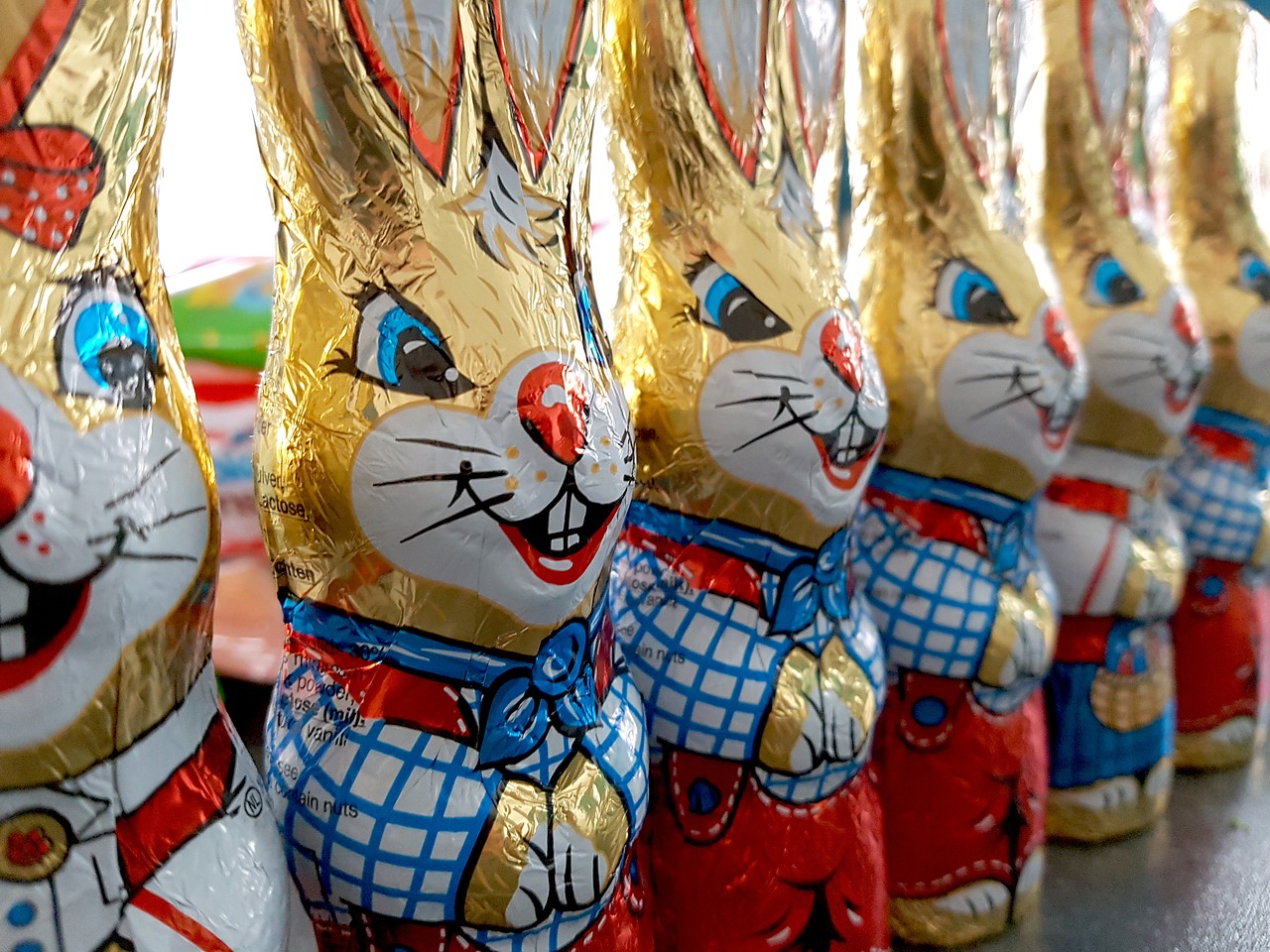That bloody Easter Bunny has been again. Oh I could swing him around by his cottony bobtail! Curse that rabbit and his chocolate droppings!
My cupboard is awash with myriad sweet treats pertaining to a festival I long since stopped celebrating. (Once you’ve had to give up the first weekend of your school holidays to kiss the dusty feet of the wooden Jesus hanging in the convent chapel and been forced into silent overnight vigil, you come to resent religion, trust me.)
I love chocolate.
I especially love cheap chocolate; the stuff with barely any cocoa solids in it and which, on the continent where they prefer their chocolate dark and bitter like their coffee, they once described as ‘vegelate.’
(EU history fact: back in 1973 the UK secured yet another EU opt out, this time from the Cocoa and Chocolate Products Directive which determined that ‘chocolate’ should not contain vegetable fat. Thereafter, British chocolate makers continued happily to debase a luxury product with cheap, industrial by-products. We always had control, people. Our downmarket, vegetable-fat-based confection is evidence!)
The reason I like cheap, milk chocolate is because it is entirely unchallenging and full of sugar.
It melts in my mouth and does something chemical in my brain which is probably very similar to what happened in the brains of Oliver Reed, W C Fields and Yootha Joyce when they started on the Napoleon brandy.
I have always loved chocolate. As a child though, it was a strictly rationed treat.
My parents were a curious mix of the conventional with just a hint of hippy. As a result, our kitchen cupboard contained some less typical snacks:
- Sunflower seeds. Imagine the shock my brother and I experienced when, on shopping for our new gerbils, we happened upon bags of these in the PET SHOP.
- Liquorice roots. Literally bits of twig we’d find in our lunch boxes to chew on after packed lunch. A sure fire way to ensure we chose school dinners.
- Tiger Nuts. Sure to raise a few eyebrows amongst those of our friends who did not know these treats by their Spanish name – ‘chufa’ – which wasn’t a whole lot better.
- Raisins. We loved raisin day. Something we actually recognised, even if all our friends laughed and pointed, insisting we were eating rabbit droppings. “Don’t give her ideas,” I’d counter.
At Easter however, mum would abandon Holland and Barrett and we would get Easter eggs, just like any other kids.
And we would fall on them. It was difficult to do moderation around chocolate at Easter in the same way it would be difficult for a thirsty man to take just a few sips at an oasis in the desert.
Those eggs went in sideways, my friends.
As I grew older I noticed that quite a lot of guilt was built around chocolate and I absorbed some of that as well.
At our convent boarding school, chocolate was the first thing girls gave up at Lent.
It was a commodity we placed a high value on.
I remember train journeys to and from school where we would pool our resources: 2 pence pieces, 5 pence pieces until we had the magic number – 20p – for a Nestle bar from the railway vending machine which we’d share between eight of us.
And then we found out about Nestle and the baby milk scandal. More guilt. Less chocolate.
It can be no wonder then, that I’ve arrived in Executive Youth with a complicated relationship around chocolate.
Be assured, I’m working through it.
I’ve decided that I can no longer just turn to it in moments of crisis; when I realise I’ve not paid the credit card bill, or forgotten an appointment say, or had a row with my husband/parking attendant/person-in-call-centre.
Or in moments of deep joy; when I’ve found myself shortlisted for a writing prize (ok, this has only happened once), or been booked for a paid comedy gig.
I have to meet triumph and disaster without a bar of Dairy Milk.
I have to remember the words of my father as I’d bite off another chocolate rabbit ear…
“Do you really need that?”
I’m finished with the Easter Bunny. It’s back to the Tiger Nuts for me.


